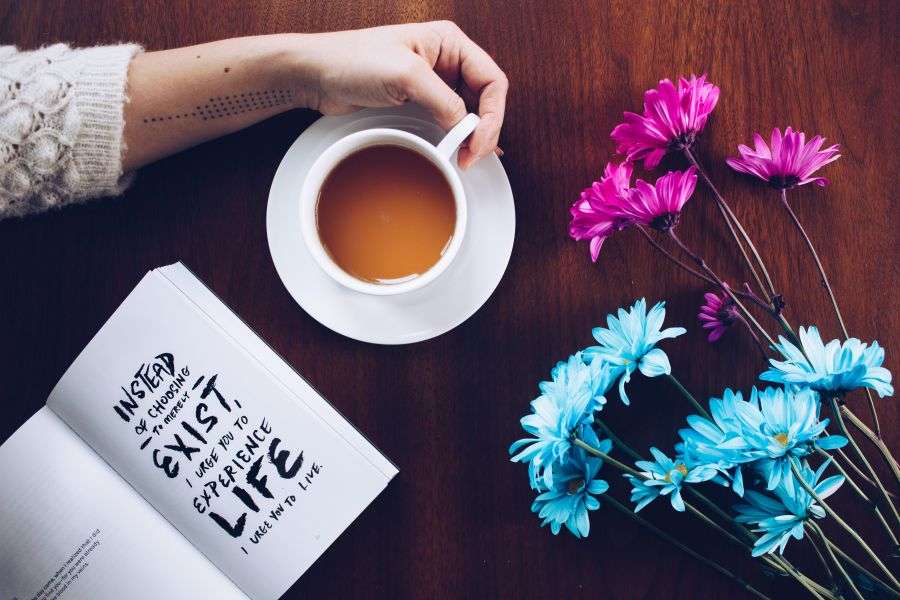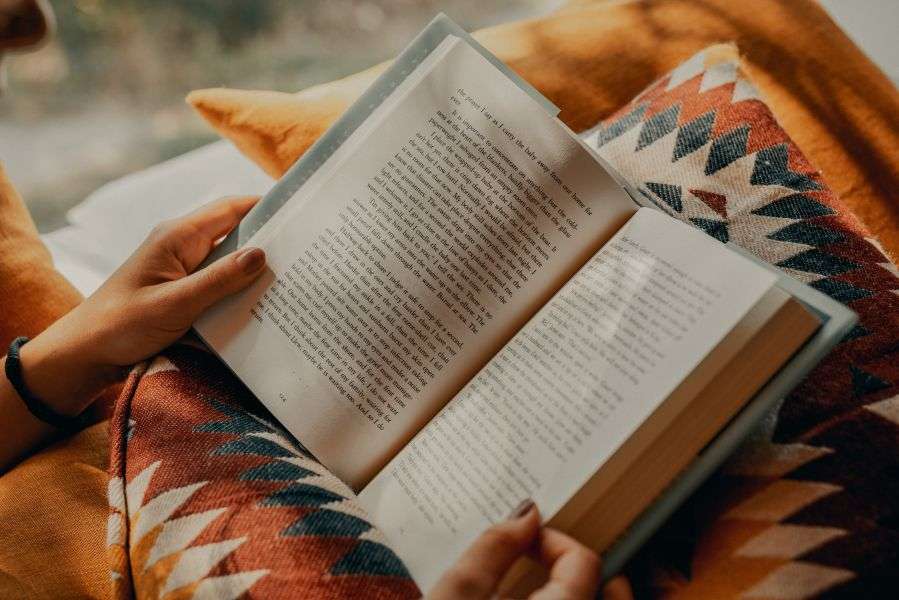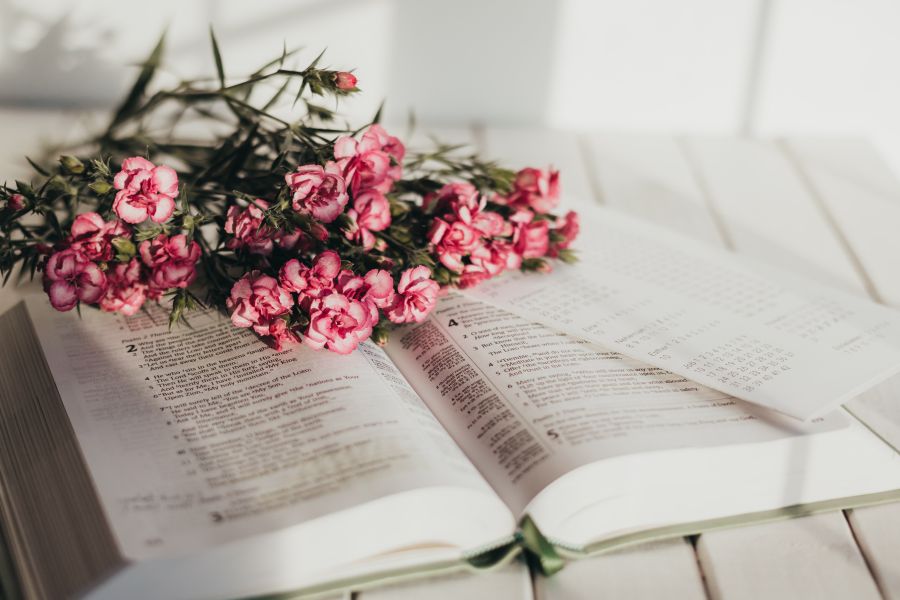龙门石窟英语导游词(附翻译)
Ladies and gentlemen,
Welcome to Longmen Grottoes.They are located in the south of Luoyang City.They are
between Mount Xiang and Mount Longmen and face Yi River.Longmen Grottoes,Yungang Caves and Mogao Caves are regarded as the three most famous treasure houses of stone inscriptions in China.The grottoes were started around the year 494 when Emperor Xiaowen of the Northern Wei Dynasty (386-534 A.D.) moved the capital to Luoyang.Work on them continued for another 400 years until the Northern Song Dynasty (960-1127 A.D.).The first caves of Longmen were excavated in 494,the 12thyear of the Northern Wei Dynasty Xiaowen Emperor's reign.The grottoes extend for some 1,000 meters (about 1,094 yards) from north to south.They contain over 2,300 holes and niches,2,800 steles,40 stupas,1,300 caves and 97,000 sculptured figures that have survived the test of time.Most of these works date from the Northern Wei Dynasty and the flourishing age of the Tang Dynasty (618-907 A.D.).Lots of historical materials concerning art, music, religion, calligraphy, medicine, costume and architecture are stored in the Longmen Grottoes.
Fengxian Temple
Fengxian Temple was built in the Tang Dynasty and it is the largest grotto in Longmen Grottoes with a width of 36 meters (about 118 feet) and a length of 41 meters (about 136 feet).There are nine major figures of various facial appearances and temperaments in the temple that were built in accordance with Buddhist rites by the artists.The most impressive figure is the statue of Vairocana Buddha sitting cross-legged on the eight-square lotus throne.It is 17.14 metres (about 56 feet) high;the head alone is four meters (about 1 3 feet) high,and the ears are nearly 2 meters (about 6 feet) long.Vairocana means illuminating all things in the sutra.The Buddha has a well-filled figure,a sacred and kindly expression and an elegant smile.According to the record on the epigraph,the Empress Wu Zetian together with her subjects took part in the ceremony of Introducing the Light (a Buddhist blessing that the Buddha opens the spiritual light of himself and shares it with others).At the sides of Vairocana there are two statues of Vairocana Buddha’s disciples,Kasyapa and Ananda,wearing prudent and devout expressions. The figures of Bodhisattvas and Devas can also be found in the temple.Some have dignified and genial expressions,while others are majestic and fiery. The various appearances and delicate designs are the representations of the Tang Empire’s powerful material and spiritual strength and the wisdom of its people.
Wanfo cave
The Wanfo Cave which was completed in 680,is a typical cave of the Tang Dynasty of two rooms and square flat roofs.Its name is due to the 15,000 small statues of Buddha chiseled in the southern and northern walls of the cave.The main Buddha Amida sits on the lotus throne,having a composed and solemn face.The wall behind Amida is carved with 54 lotuses,upon which there are 54 Bodhisattvas in different shapes and with various expressions.In addition,very pretty and charming lifelike singers and dancers are also chiseled on the wall.The singers are accompanied by various kinds of instruments and the dancers dance lightly and gracefully to the music,giving the cave a lively and cheerful atmosphere.A 85 centimeter high statue of Kwan-yin holding a pure bottle in his left hand and a deer’s tail—a symbol of brushing off the dust in Spirit—in right hand is on cave’s southern outsider wall.This figure is well designed and is regarded as the Longmen Grottoes’best example of a Tang Dynasty Bodhisattva statue.
Guyang Cave
Guyang Cave is the oldest cave in Longmen Grottoes.There are three tiers of niches on the northern and southern wall of the cave,in which are hundreds of statues,and most of the statues are engraved with the names of the artists,the dates and the reasons for carving them.The sculptures are of diverse shapes and patterns that are representations of the Gandhara Art style after the grotto art transmitted to Luoyang. A stature of Sakyamuni is situated in the middle and is nearly 8 meters (about 26 feet) high. Nineteen of the most famous Twenty Calligraphies are found in Guyang Cave. The Twenty Calligraphies represent the Wei style steles, which are the Longmen Grottoes’ basic stele calligraphies.
Binyang Cave
After constructing the Guyang Cave, the royalty of the Northern Wei Dynasty carved out a series of larger scale caves, which are the northern, southern, and middle Binyang Caves. The middle cave took the longest time to complete (from 500 to 523) and is the only one of the three finished during Northern Wei period. There are 11 big statues in the cave. Sakyamuni is of dignified and serene appearance, while this disciple and Bodhisattva are of slender figure and elegant look, which are the typical style of the late Northern Wei Dynasty. The floor is engraved with lotus patterns and on the rooftop is a flourishing lotus flower relief.
Lotus Cave (Lianhua Cave)
Chiseled grottoes on the base of the natural limestone caves are also seen in Longmen, and the Lotus Cave is one of them. Unlike the sitting statues, Sakyamuni is of standing figure, showing that he has trudged a long distance to develop Buddhism from India to China. A huge relief of a well sculpted lotus flower is engraved on the dome, with a seed bud in the center and petals of honeysuckle patters circling around. Around the lotus are six flying musicians with vivid gestures, as if they are dancing along with the melodies of the music.
Xiangshan Temple
Xiangshan Temple,which is ranked the first among Longmen Grottoes’ten temples,is situated in the middle mountainside of the East Hill.The East Longmen Hill is teeming with spices and is therefore very fragrant smelling.It’s name,Xiangshan, means“Fragrant Hill”in Mandarin.The temple was also named Xiangshan Temple.The present Xianshan Temple was reconstructed during the Qing Dynasty in 1707 and this work was based on the old Temple’ design.In 2002,Xiangshan Temple was expanded on the basis of the Qing Xiangshan Temple by Longmen Grottoes Administration, with a newly constructed Bell and Drum Tower,Wing Room,as well as Halls of Mahavira and Nine Persons. In addition, the belfry, Hall of Arhats, Emperor Qianlong’s stele and palace, Wing-room, Jiang Jieshi and Song Meiling’s Villa, along with the stairs, plank roads and temple walls have all been rebuilt and restored.A new gate was constructed south of the temple.The temple takes on a new look today, and it is really a rare scenic world cultural landmark.
Bai Garden
The Bai Garden is located on Pipa Peak north of East Longmen Hill (Xiangshan Hill) and was
reconstructed by Tang Youzeng of the Qing Dynasty in 1709.The temple is surrounded by green pine trees and cypress, looking solemn and serene. It was designated a key site for protection at the state level by the State Council in 1961. The tomb of Bai Juyi is a round mound of earth, 4 meters high, with a circumference of 52 meters.In front of the tomb stands 2.8-meter-high tombstone,which reads,“The Tomb of Bai Juyi”.Bai Juyi’s family was originally from Taiyuan in Shanxi Province and then moved to neighboring Shaanxi Province.He lived from 772 to 846 A.D.,and his style name was Letian. Bai Juyi was one of the Tang Dynasty’s most outstanding poets and enjoyed great literary fame both in and outside of China.He held a number of high government posts and instructed a prince during his later years. After retiring,he came to Luoyang and made good friends with“Nine Persons of Xiangshan Hill”,who often composed and sang poems at the Longmen Grottoes. Meanwhile,he donated money for the construction of Xiangshan Temple. When Bai Juyi died, he was buried, in accordance to his will, in the present Bai Garden.The important scenic spots in the Bai Garden are the Tingyi, Cuiyue, Bai, and Songfeng Pavilions, Letian Hall, Bird’s Head Gate, Pipa Peak, Bai Juyi’s Tomb, Wogu Tablet, Poem Corridor, and Daoshi Reading Room.As a garden constructed according to style of the Tang Dynasty, it is both a tourist resort and a good place to pay homage to the great poet.
In addition, there is Prescription Cave that has about 140 prescriptions engraved on the walls,showing the achievements of ancient Chinese medicine.Some of the prescriptions are still used today.Other caves and temples like Xiangshan Temple, Huangfu Cave, and Qianxi Temple can also be found at the Longmen Grottoes.
Well, my friends,Longmen Grottoes’s visit nearly come to an end,and I have to say goodbye to you a11.Anyway I am very glad to have spent such a happy and unforgettable day with you. Welcome you to come here again for sightseeing.Thank you all! Have a happy journey! Goodbye!
各位朋友大家好! 我们现在要去参观游览龙门石窟。龙门石窟位于河南省洛阳市南郊,处于香山(东)、龙门山(西)两山之间,面朝伊水。它同甘肃的敦煌石窟、山西大同的云冈石窟并称中国古代佛教石窟艺术的三大宝库。龙门石窟开凿于北魏孝文帝迁都洛阳 (公元494年) ,直至北宋前后延续四百多年。龙门石窟南北长约1000米,现存洞和窟共2300个,窟龛2800个,佛塔40余座,石窟1300多个,佛像97000余尊。绝大部分是北魏和盛唐时期的作品。大量涉及艺术、音乐、宗教、雕刻、医药、服饰和建筑的历史材料被保存在龙门石窟中。
奉先寺
奉先寺是龙门唐代石窟中最大的一个石窟,长为41米,宽为36米。在寺中,艺术家塑造了9个相貌、气质各异的佛教神像。最能给人留下印象的是正中卢舍那佛的叉腿坐像。这个佛像身高17.14米,头高4米,耳朵长1.9米。卢舍那意即光明遍照。这尊佛像丰颐秀目,嘴角微翘,呈微笑状。据造像铭载,女皇武则天曾亲率朝臣参加了卢舍那佛的“开光”仪式。在卢舍那佛两侧有两尊佛像,他们是迦叶和阿难。这两位菩萨衣饰华丽,端庄而矜持。天王和力士也能从寺中找到,有的严肃威武而硕壮有力,有的坚毅勇猛而无所畏惧。这些形神兼备、惟妙惟肖的佛像,反映了唐帝国强大的物质和精神力量,也反映了唐代人民高超的技艺和智慧。
万佛洞
万佛洞完工于公元680年,前后两室,有一平顶广场,是典型的唐代建筑。它因洞内南北两壁雕刻的一万五千多尊小佛像而得名。正壁主尊阿弥陀佛高约4米,头饰波状发髻,面相丰满圆润,结跏趺坐于八角形束腰须弥莲花座上,神情安详肃穆。后壁刻着五十四枝莲花,每枝莲花上各坐一尊菩萨或供养人,构思新颖奇特。南北两壁壁基雕有多尊伎乐人和舞者。伎乐人手持各种乐器,形象生动传神,似乎已陶醉在自己奏出的天籁之声中。舞者婀娜多姿,衣袂飘飘,仿佛正在精心演绎最曼妙的舞蹈。整个洞窟营造了一种西天极乐世界里歌舞升平,万人成佛的场景。洞外南壁雕有观世音菩萨像,匀称适度,右手执麈尾,左手提净瓶,表现了“万法皆空归南海,一尘不染净禅心”的佛家至高境界。这个佛像设计精美,是唐石刻观音菩萨的杰作。
古阳洞
古阳洞是龙门石窟中开凿最早的一座洞窟。古阳洞北侧墙壁上排列了三层大型佛龛,里面很多佛龛造像,这项佛龛造像多有题记,记录了当时造像者的姓名、造像年月及缘由,这些都是研究北魏书法和雕刻艺术的珍贵资料。这些题记的式样和风格代表了随后传至洛阳的魏碑体。一尊高7.82米的释迦牟尼像安坐在洞窟中央。举世闻名的“龙门十二品”中古阳洞独占十九品。“龙门十二品”代表北魏“秀骨清像”造像风格,是龙门石窟的'精髓所在。
宾阳洞
兴建古阳洞之后,北魏王室又建造了一系列大型洞窟,那就是宾阳北洞、宾阳南洞和宾阳中洞。宾阳中洞从公元500年开凿直到523年停工,是三洞中唯一在北魏时期完成的。洞中有11尊大佛像,主佛释迦牟尼表情温和,神采飘逸,体态修长,面容清瘦,造像手法是典型的北魏后期的风格。宾阳中洞的地面雕刻着大型莲花,周边是莲花花瓣、水波纹和其他装饰图案,如同鲜艳美丽的地毯式样子。
莲花洞
龙门石窟中也有基于自然洞穴而雕刻成的石窟,莲花洞便是其中典型一例。与一般的坐像不同,这里的释迦牟尼是站像,体现了他长途跋涉从印度往中国宣传佛法之艰辛。穹隆顶上雕有一朵硕大精美的莲花,花瓣朝外,每片都有不同的风格。围绕莲花,还有6个手捧果品、迎风飞翔的大型飞天浮雕,婀娜多姿,生动传神,而天衣、云彩随着天女的舞动在翩飞飘扬。
香山寺
号称“龙门十寺”之首的千年古刹香山寺位于龙门东山山腰。东龙门山因其香味而被称为“香阁”,也称香山,其寺便称为香山寺。现有的香山寺是于清朝年间(公元1707年)在旧址上重建的。2002年,龙门管理局在清代香山寺的基础上进行了扩建,包括兴建了钟鼓楼、大雄宝殿、厢房、门楼、观景廊、莲花池、南北山上步游道等仿古建筑;改建、维修了天王殿、罗汉殿、御碑亭、蒋宋别墅、衣钵塔等旧有建筑。景区管理部门还对香山寺及龙门东、西两山石窟周边环境进行了清理。现在的香山寺已经恢复“危楼切汉,飞阁凌霄,石像七龛,浮屠八角”的风貌,确实是不可多得的美景。
白园
白园位于龙门东山(香山)琵琶峰,为清代唐友曾重建(公元1709年)。园内松柏葱郁,景色清丽。1961年与龙门石窟一起被列为国家级重点文物保护单位。园内的白居易墓高4米,四周有52米长的围墙。在墓前有一高2.8米的墓碑,上刻有“白居易之墓”。白居易,字乐天,祖籍山西太原后迁至陕西,生于公元772年,卒于公元846年。作为我国唐代著名诗人之一,白居易在国内外文学界都有较高声誉。他在朝廷担任多个职务,晚年曾为太师,告退后来到洛阳,与经常在龙门赋诗作曲的香山九老结为好友,并捐赠修建香山寺。他死后,人们按其意愿将他葬于白园。白园建有清谷、听伊亭、乐天堂、白亭、鸟头门、道时书屋、诗廊、翠樾亭等仿唐建筑,是一个缅怀伟大诗人的优美景点。
这里还有药王洞,墙壁上刻有140个药方,体现了中国古代的医学成就。有些药方沿用至今。其他的洞和寺庙如皇甫洞和潜溪寺等也在龙门石窟中。
好了,各位游客,龙门石窟参观活动就要结束了,欢迎大家有机会再到这里参观旅游,谢谢! 再见!
相关文章
贵州旅游导游词2023-06-12 09:50:13
岱庙导游词开场白2023-06-07 00:18:00
海南的亚龙湾导游词2023-06-13 22:44:05
优秀的天门导游词2023-06-10 10:12:03
黄山的云海导游词2023-06-06 00:50:24
天津盘山的导游词范文2023-06-12 01:48:31
上海对外经贸大学和北京交通大学(威海校区)对比哪个好(排名分数线区2024-03-31 16:25:18
河北高考排名237950名物理能上什么大学(能报哪些学校)2024-03-31 16:19:23
山东城市建设职业学院在山东招生人数和招生计划 多少人2024-03-31 16:15:16
上海农林职业技术学院在湖南招生人数和招生计划 多少人2024-03-31 16:12:52
吉林农业科技学院在湖南招生人数和招生计划 多少人2024-03-31 16:09:19
安徽高考多少分可以上云南经贸外事职业学院 招生人数和最低分2024-03-31 16:04:52
景点导游词(十五篇)2023-06-11 20:10:27
四川九寨沟导游词(精选十五篇)2023-06-03 11:44:39
湖北省有名景点导游词2023-06-18 14:24:56





